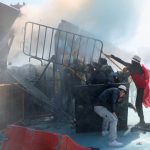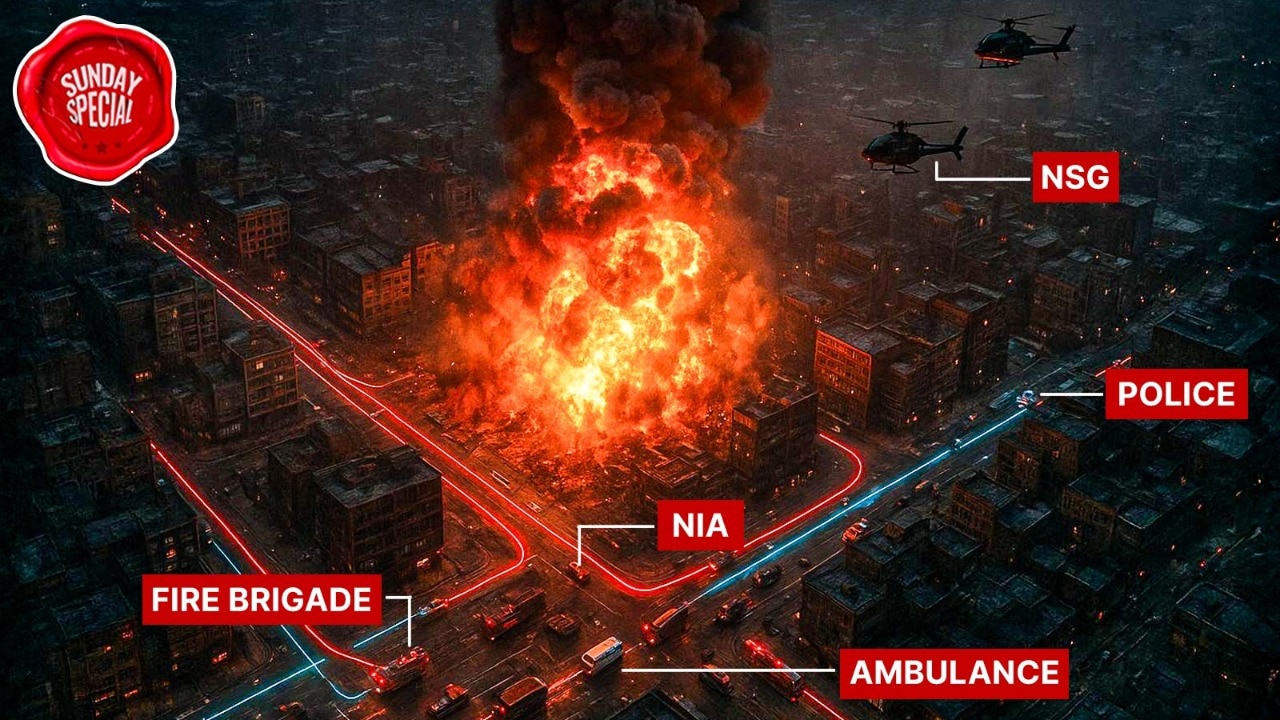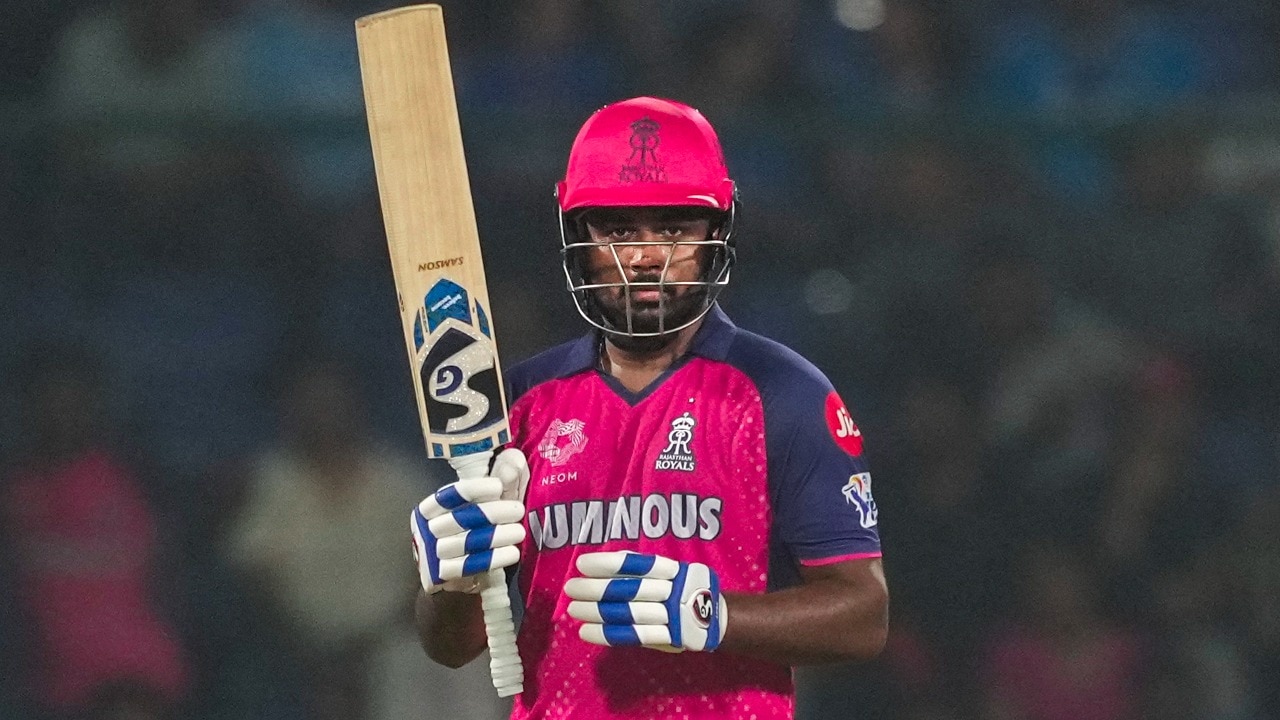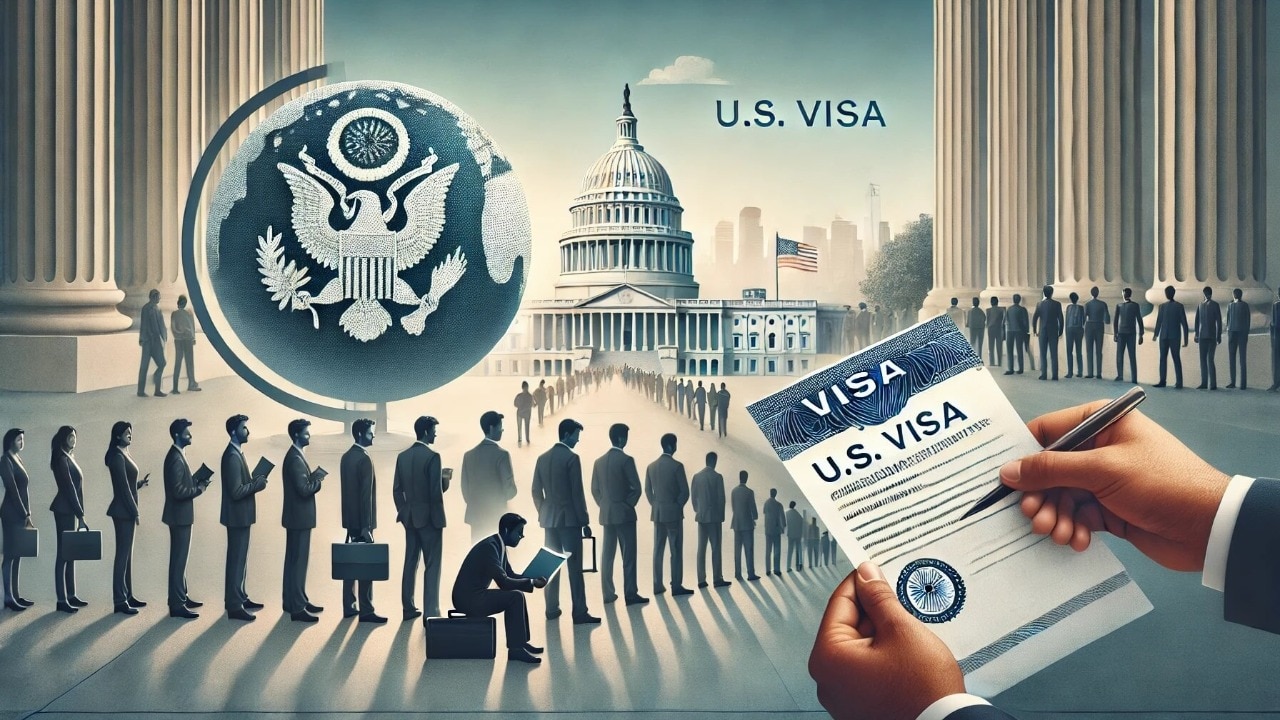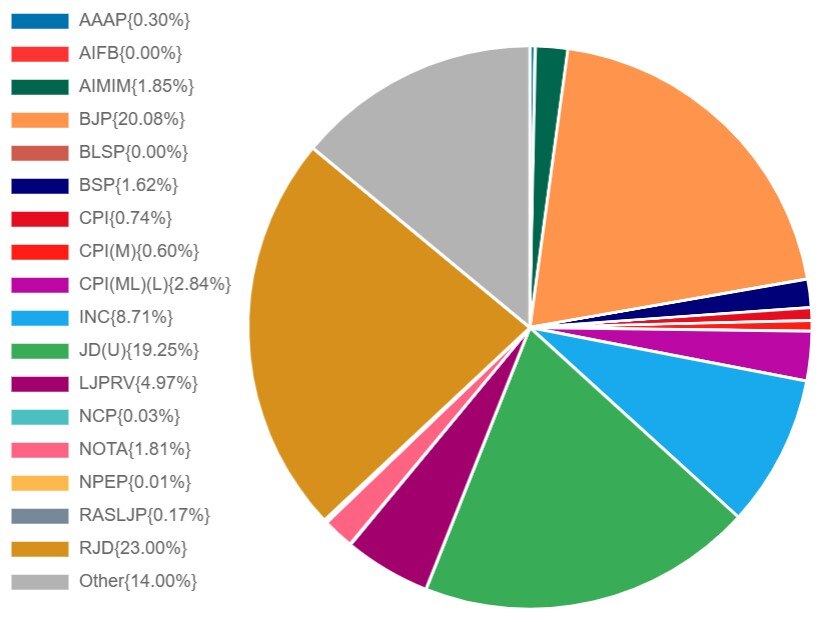At around 9.15 pm on November 26, 2008, a phone call informed the Colaba Police Station of shots being fired in South Mumbai’s Colaba Causeway. The caller told the Police Control Room that bullets were sprayed inside Leopold Cafe, killing many. At the same time, explosions were heard at the nearby Taj Mahal Palace Hotel. In total, around a dozen places were hit in India’s financial capital. But the deployment of security forces and agencies, as seen in the recent blast near the Red Fort in Delhi, was different 17 years ago. It was a nightmare for India, and there was no quick response plan to counter a city-wide attack.
It was only two days later that the National Security Guard (NSG), India’s premier counter-terror force, was pressed into action. Since then, India’s response system to counter terror incidents has evolved a lot. Last week, when explosives in a car went off in old Delhi, right in front of the Red Fort, killing 13 people, NSG commandos and personnel from other premier agencies were on the spot within an hour.
The first calls informing the fire brigade station and the police of the explosion were received at around 6.55 pm. The Kotwali Police Station was the primary responding station. Seven fire tenders arrived within 10 minutes, and the area was cordoned off by the police by 7.30 pm. Soon, the National Investigation Agency (NIA), the NSG, the Forensic Science Laboratory (FSL), and the ATS team of the Delhi Police took control of the car blast site near the Red Fort by 8 pm. Agencies were deployed swiftly, based on the lessons learnt from the 26/11 Mumbai attacks.
Although the Delhi blast of 10/11 and the 26/11 are entirely different in nature, with one being a bomb blast in a crowded marketplace and another being an active terror attack with hundreds of hostages, a look at the response and the co-ordination among agencies and forces, with a gap of 17 years, offers some insights.
The first few minutes after an attack or a blast, and the first 24 hours are critical, not only for saving lives, but also for tracing the terror trails. It also involves the forces being alert to avoid any eventualities.
But what is the protocol when a bomb goes off or a terror attack is reported in India? From the first responders to those conducting rescue operations, to the teams handling the probe, how does the entire process unfold? Who makes the critical calls?
India Today Digital spoke to experts who have previously served in the NSG, have headed police forces, and officers from intelligence agencies, to understand how the entire process unfolds in case of a terror attack.
IDENTIFYING TERROR ATTACKS AND RESPONDING QUICKLY
Last week in Delhi, when a car exploded in front of the Red Fort, initially, it wasn’t clear whether it was a terror incident. In the 26/11 attacks, the case was similar. For the first few hours, authorities mistook a terror attack as a gang conflict. Little did Maharashtra Police know that multiple elite forces like the Marcos and the NSG would be required for the operations.
By the time the NSG took control during the 26/11 attacks, top officers of the Maharashtra ATS and encounter specialists had fallen to terrorists’ guns. The NSG had only one command centre back then, over a thousand kilometres away from Mumbai, in Haryana’s Manesar.
In the case of the blast in Delhi on November 10, many thought it was a CNG cylinder explosion. But since the incident happened in a high-footfall area and soon after 2,900-kg of bomb-making material was seized in neighbouring Faridabad, Haryana, the protocol of deploying the police, along with the NIA, and the NSG was followed swiftly.
The decision was made by the Home Ministry. The Delhi Police acts under the operational and operative command of the Home Ministry.
HOW DO INDIAN AGENCIES COORDINATE IN CASE OF A TERROR ATTACK?
A retired Mumbai top cop, who was deployed on the night of 26/11 in the city, spoke to India Today Digital on the condition of anonymity. He said today, the response to a terror attack or bomb blast starts with local police securing the site and providing immediate relief.
“If terrorism is suspected, the state alerts central agencies through the Ministry of Home Affairs (MHA). The National Security Guard (NSG) handles counter-terror operations like hostage rescues, while the National Investigation Agency (NIA) leads probes for interstate or international links,” he said.
The former police officer said that after 26/11, major reforms have happened to handle terror situations at a short notice.
“Coordination now happens through a unified command post under the Home Ministry’s oversight. These reforms included setting up of NSG regional hubs, which are now present in Mumbai, Chennai, Kolkata, Hyderabad, Ahmedabad, and Jammu. Multi-Agency Centre meetings, which include both state and central agencies, are also held daily to speed up response and improve intelligence sharing.”
Former Maharashtra DGP Praveen Dixit, who served during key security operations, including the 26/11 attacks, told India Today Digital about the initial response and forensic involvement.
“If a blast happens, firstly, the maximum attention is to provide relief to those injured. You want to move these persons immediately to hospitals with whatever help you can get. The SOS call to the nearest hospital is generally made by civilians. The second stage is to secure the place, in case there is any other bomb around or terrorists that might attack later. The police also have to preserve the evidence, so we cordon off the area for that,” he said.
However, the police alone cannot ascertain the nature of the blast. “For that, you need an expert from the forensic lab. So, personnel from the Forensic Science Laboratory (FSL) are brought in. It is done under the command of the commissioner of police or the state police chief.”
Today, there is close co-ordination among all the agencies, explained Dixit.
WHEN CENTRAL AGENCIES STEP IN AND WHO TAKES CHARGE
The chain of command for responding to a terrorist attack or major explosion begins at the local level and escalates, based on the incident’s scale.
“The first alert typically reaches the nearest police station or the district control room via emergency calls to 100 or 112. Local police, including beat officers and quick response teams, secure the site. If terrorism is suspected, the state police commissioner or DGP is notified, activating the state’s anti-terrorism squad (ATS) or special task force (STF) for containment,” said Dixit.
“Coordination occurs through the State Crisis Management committee, which includes police, intelligence, and home department officials,” he said. There are nodal officers for each wing today.
The retired Mumbai top cop explained, “For central involvement, when a terror attack is suspected, the state home secretary or chief secretary requests assistance from the MHA. The MHA evaluates the request and then deploys the NSG for counter-terror operations, such as hostage rescues or neutralising threats.”
Lt Colonel Sundeep Sen (Retd), who served in the NSG and was second-in-command during the 26/11 attacks, told India Today Digital, “NSG teams are ready 24X7, and everyone in the unit knows what they are supposed to do. Today, the NSG can be airlifted within minutes with the assistance of the Indian Air Force, or even a civilian aircraft, if needed.”
IN CASE OF A BLAST, WHEN DOES THE NIA TAKE OVER THE INVESTIGATION?
Operations and investigation go on simultaneously.
“The National Investigation Agency (NIA) takes over the probe if the case involves interstate or international terrorism, working alongside the Intelligence Bureau (IB) for leads,” explained the Mumbai top cop, who requested anonymity.
“Once a terrorist attack is confirmed, a unified command post is set up, with the NSG commander leading operations under the Home Ministry’s oversight, and all the respective agencies and forces providing their input to him. This generally happens when there is an active hostage or an active terrorist involved. Otherwise, the NSG helps in bomb detection, analysis of the explosives, and being present at the site to eliminate any future threat,” he added.
In the 26/11 Mumbai attacks, this chain of command was almost missing.
HOW INTELLIGENCE IS SHARED AMONG AGENCIES AND FORCES IN INDIA?
Today, there is complete coordination between central and state security agencies.
“Earlier, there were challenges, such as state police failing to cooperate with each other, unclear communication between agencies, or sometimes nodal officers who were supposed to brief another agency or state police were not assigned. These issues have been resolved now. In the past, say before 26/11, the roles were not clearly defined. Even when messages came from central agencies, it wasn’t clear who should act. All these gaps have now been streamlined,” explained ex-Maharashtra DGP Praveen Dixit.
An NCR-based retired senior officer with the Directorate of Military Intelligence (MI), which is the intelligence arm of the Indian Army, explained how these operations are carried out in detail. “For example, after the blast in Delhi, the local police, the Intelligence Bureau (IB), which is India’s domestic intelligence body, and other Central security agencies kick off the first probe. If the incident looks more serious or multilayered, other central agencies like the CBI or the NIA step in. If the incident involves the military, the MI takes over that part,” he told India Today Digital.
This synergy is also the result of a focus on intelligence-sharing among agencies after the Mumbai attacks.
Speaking in the context of the recent Delhi blasts, the intelligence officer explained, “If a terror link is suspected and the incident happens in the national capital, the Prime Minister’s Office (PMO) often drops in and gets the NIA and technical agencies such as National Technical Research Organisation (NTRO) to join the effort. The NTRO is a technical intelligence agency of India that provides assistance to other agencies like the IB and RAW—India’s external intelligence agency.”
However, he explained why intelligence failures still happen. “One big reason intelligence failures still happen is the lack of a single, central hub for data sharing. The NTRO was created for technical support and to help bridge gaps, and plans to improve sharing were drawn up after the Mumbai terror attack, but implementation has repeatedly stalled. Agencies are reluctant to share [information]. That’s why, at times, such as this, coordination has to be driven by the PMO. The PMO can order agencies to share data and get them to work together.”
However, when it comes to operations, there are clear-cut rules now.
Lt Colonel Sen explained, “It is not a political game. It is not that somebody is going to earn brownie points from something. As far as the terror incidents are concerned, there are regular drills to fill any gaps that might exist. In every state, the NSG goes and practices with the local police. There is a threat-perception study that takes place all over India to identify assets or areas, like metros, bus stations, nuclear power stations and refineries, that could be targeted by terrorists. And we consider worst-case situations. Agencies follow the same.”
So, this is what takes place after the first phone call informing of an explosion. Seventeen years since the 26/11 attacks, India’s security grid has tighter coordination, clearer protocols and much faster mobilisation. Be it site control, intelligence sharing, or chain of command, the system has been overhauled and continues to evolve.
– Ends
Tune In

